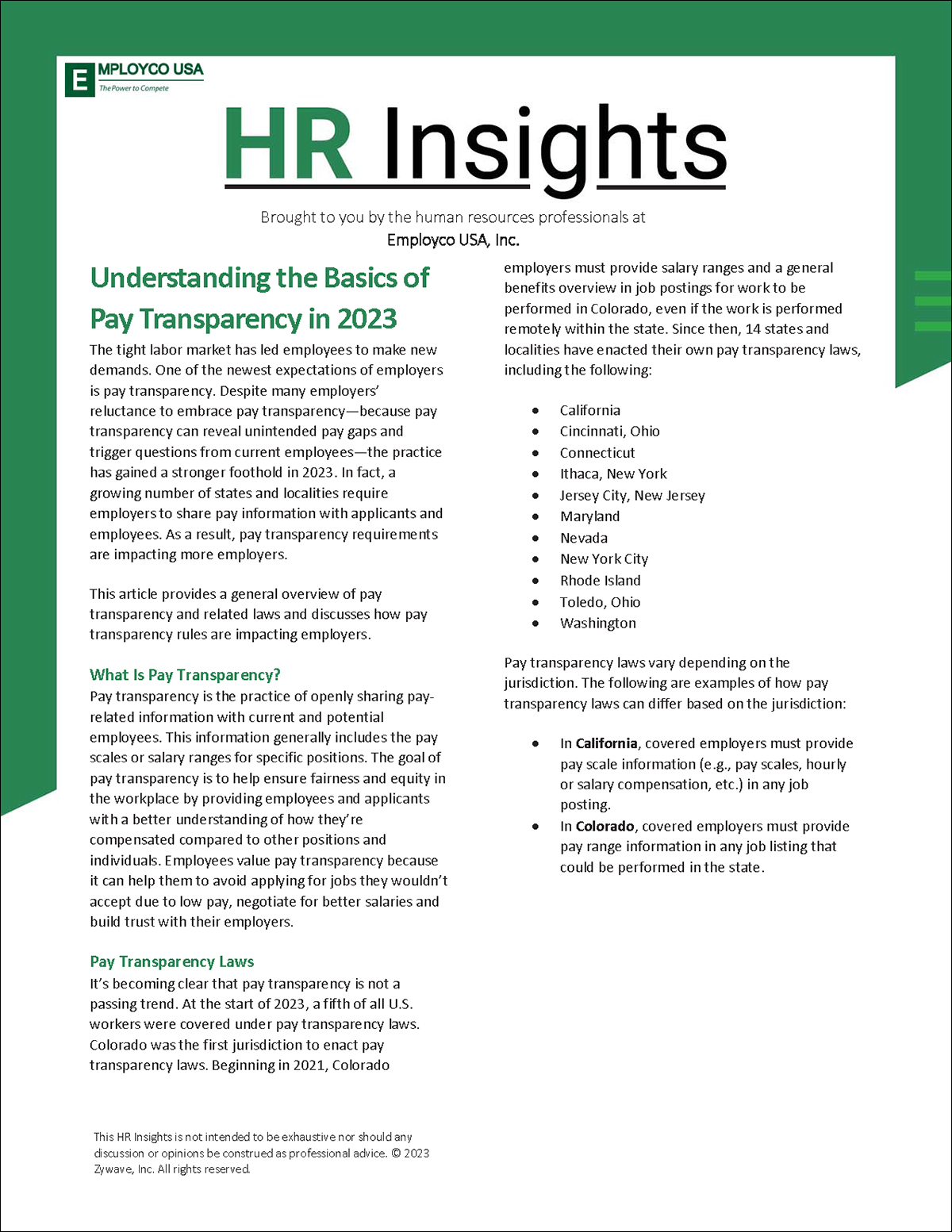
The tight labor market has led employees to make new demands. One of the newest expectations of employers is pay transparency. Despite many employers’ reluctance to embrace pay transparency—because pay transparency can reveal unintended pay gaps and trigger questions from current employees—the practice has gained a stronger foothold in 2023. In fact, a growing number of states and localities require employers to share pay information with applicants and employees. As a result, pay transparency requirements are impacting more employers.
Pay transparency is the practice of openly sharing pay-related information with current and potential employees. This information generally includes the pay scales or salary ranges for specific positions. The goal of pay transparency is to help ensure fairness and equity in the workplace by providing employees and applicants with a better understanding of how they’re compensated compared to other positions and individuals. Employees value pay transparency because it can help them to avoid applying for jobs they wouldn’t accept due to low pay, negotiate for better salaries and build trust with their employers.
Pay transparency laws present compliance challenges for employers subject to them since they vary based on the state or locality. Employers who fail to comply with these laws can incur costly penalties ranging from $300 to $250,000, depending on the jurisdiction. Employer compliance difficulties are often greater for organizations that recruit and hire employees across state lines, since hiring remote workers can trigger legal obligations in states where employers do not have a physical presence.
Continue reading the full article: HR Insights – Understanding the Basics of Pay Transparency in 2023
You can also watch our recent HR Chat: Understanding the Basics of Pay Transparency
